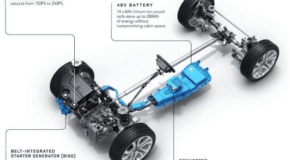
Aerodynamics is a critical and often underestimated aspect of automotive design that plays a pivotal role in a vehicle’s performance, efficiency, and safety. Whether you’re a car enthusiast or a casual driver, understanding the fundamentals of automotive aerodynamics can deepen your appreciation for the sleek lines and curves of your favorite vehicles. In this article, we’ll explore the world of automotive aerodynamics, from its impact on speed to its contribution to fuel efficiency.
The Basics of Automotive Aerodynamics
Automotive aerodynamics is the study of how air moves over and around a vehicle. It’s about shaping a car’s body and components to minimize air resistance (drag) and improve stability, all while ensuring it remains grounded on the road.
Reducing Drag for Speed
Aerodynamics is paramount for high-speed performance. Here’s how it works:
- Streamlining: Designers aim to make a car as aerodynamic as possible, reducing turbulence and drag. This includes shaping the body to minimize the air’s resistance while in motion.
- Reducing Lift: A well-designed car also minimizes lift, the force that can make a vehicle feel light or unstable at high speeds. This is achieved by optimizing the shape of the underbody and incorporating aerodynamic features like spoilers and splitters.
- Balance: Achieving the right balance between minimizing drag and reducing lift is essential. It’s a delicate dance between speed and stability, and designers use wind tunnels and computer simulations to find the perfect equilibrium.
Fuel Efficiency and Aerodynamics
Aerodynamics doesn’t just impact speed; it’s also closely tied to fuel efficiency. Here’s how:
- Reducing Resistance: Less air resistance means your car doesn’t have to work as hard to move through the air. This translates to better fuel economy on the highway.
- Improving Electric Range: For electric vehicles (EVs), reducing drag is especially important because it directly affects the vehicle’s range. An aerodynamic EV can travel farther on a single charge.
- Eco-Friendly Materials: Some automakers use lightweight and eco-friendly materials in their cars to further reduce weight and improve efficiency.
Aerodynamics and Safety
Beyond speed and efficiency, aerodynamics also plays a critical role in a vehicle’s safety. Here’s how:
- Stability: A well-designed car is less likely to skid or become unstable during adverse weather conditions or sudden maneuvers, enhancing overall safety.
- Wind Noise Reduction: Effective aerodynamics can reduce wind noise inside the cabin, improving comfort and reducing driver fatigue.
- Visibility: Features like properly shaped side mirrors and wipers contribute to maintaining visibility even at high speeds or in rainy conditions.
The Future of Aerodynamics
Automakers continue to push the boundaries of aerodynamics, especially in the development of electric vehicles and autonomous cars. As EVs become more prevalent, their design will focus on reducing air resistance to maximize range. Additionally, autonomous cars may use advanced aerodynamics to optimize efficiency and safety.
In conclusion, automotive aerodynamics is more than just a cool design feature; it’s an essential aspect of vehicle performance, efficiency, and safety. Next time you admire a car’s sleek lines or appreciate its impressive fuel economy, you can thank the art and science of aerodynamics for making it all possible.
















